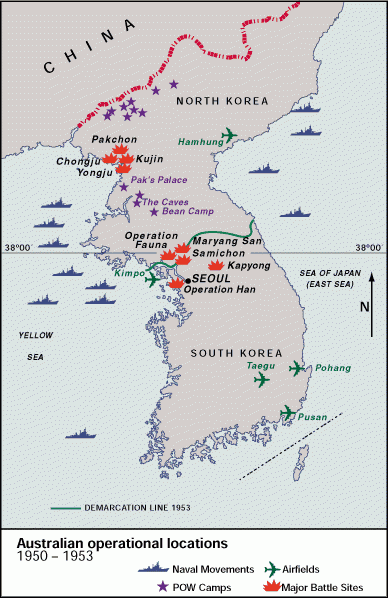Out in the Cold: Australia's involvement in the Korean War - Australian Operations
- Home
- Timeline
- Origins
- Australians in Korea
- Australian Operations
- Weapons of War
- Faces of War
- Armistice and Aftermath
- Glossary
From October 1950 until mid-1951, Australian service personnel were involved in many engagements in Korea, and were praised for their bravery and skill. After that time, the war fell into a stalemate; the frontline barely moved. While patrols and small raids on enemy positions were frequent, large operations were few. However, the contributions of all three army battalions, together with support from the RAN and the RAAF, meant that Australians were an important part of the Commonwealth war effort in Korea.

Australian Battles
- 3rd Battalion, Royal Australian Regiment
September 1950 - February 1954 - Yongju/The Apple Orchard
October 22, 1950 - Kujin/ Broken Bridge
October 25-26, 1950 - Chongju
October 29, 1950 - Pakchon
November 5, 1950 - Kapyong
April 23-24, 1951 - Maryang San/Operation Commando
October 2-8, 1951 - 1st Battalion, Royal Australian Regiment
March 1952 - Sept 1953 - Operation Fauna
Dec 10-11, 1952 - 2nd Battalion, Royal Australian Regiment
March 1953 - Sept 1954 - Samichon/The Hook
July 24-26, 1953 - The Royal Australian Navy
- Operation Han
July-Sept, 1952